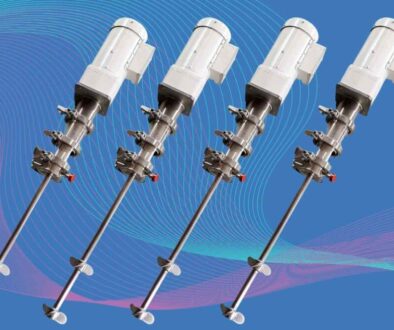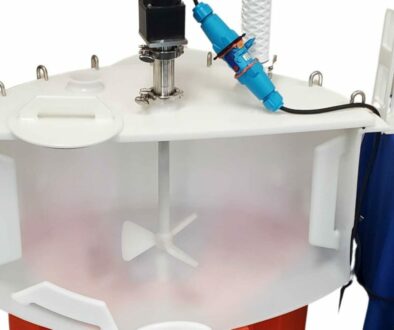How to Mix E-Liquids & Vape Juice
Vape juice, or e-liquid, is the most important constituent of an electronic vaporizer, alternatively known as a vape, vape pen or e-cigarette. During use, the e-liquid is vaporized by a battery-powered atomizer to deliver the desired flavor, sensation and throat hit.
There are a multitude of flavors for e-cigarettes on the market. A vast range of e-liquids can be produced through mixing and blending of concentrates to satisfy any taste.
The Composition of Vape Juice
Vape juice, or e-liquid, consists of five main ingredients:
- Propylene glycol. This is a clear, odorless liquid used in the creation of e-liquids. Typically thin and runny in consistency, propylene glycol is the most popular of the “carriers” – the substance responsible for holding nicotine, flavors, and botanicals in suspension, thus creating clouds of smoke-like vapor. It doesn’t compromise the flavor of the vape juice in any way but produces a stronger throat hit than vegetable glycerin. However, it dries out the throat and mouth with consistent use.
- Vegetable glycerin. This more viscous diluent has a slightly sweet taste that can mask other flavors in the e-liquid. It helps to produce a smoother smoking experience for users who don’t enjoy a strong throat hit.
- Nicotine. The level of nicotine in vape juice can be adjusted to suit the tolerance level of an individual user. Higher levels of nicotine will produce a stronger throat hit.
- Flavor concentrate. These are complex artificial compounds that are formulated to produce a large array of flavors.
- Distilled water. Distilled water is used to thin vegetable glycerin for users who prefer a high ratio of this diluent in their e-liquid.
The amount of each of these constituents of vape juice can be adjusted to suit individual tastes through mixing and blending.
The Manual Process for Mixing & Blending E-Liquids
Gloves, containers, syringes and drip-tip bottles are needed for manual preparation of vape juice concentrates. There is a recommended procedure for mixing e-liquids:
- Determine the desired nicotine strength.
Desired nicotine strength in the final vape juice mix will depend on a user’s personal preference. In most cases, nicotine levels are in the range of 0 to 24 milligrams of nicotine per milliliter of e-liquid.
The following formula determines the volume of diluted nicotine preparation to use:
(Amount of nicotine needed in mg)/(Strength of diluted nicotine in mg/ml) = Volume of diluted nicotine to use in ml - Extract the right amount of nicotine preparation.
Use a clean syringe to extract the right volume of diluted nicotine. Care should be taken to remove any air bubbles in the syringe which will affect the measurement. Air can be removed by inverting the syringe and tapping it to drive the bubbles to the top.
Depress the plunger to remove the air from the syringe. Once you have the correct measurement, transfer the nicotine from the syringe into a drip-tip bottle. - Add the desired flavor concentrates.
Transfer the flavor concentrates to the bottle. There is no restriction on the combination of flavors that can be used in e-liquids. However, the recommended ratio throughout the industry of flavor concentrate to volume of e-liquid is between 20 and 30 percent. Over-flavoring can lead to the development of unpleasant tastes in the vape juice.
Separate, clean syringes should be used when adding more than one flavor. It is advisable to experiment on a small quantity of flavor combinations first. Although different flavors may produce the desired taste profile individually, they may not work as well in combination. - Measure and add the diluent.
The diluent is the final ingredient to be added to the mixture. This is usually a blend of Propylene Glycol (PG) and Vegetable Glycerin (VG). It is important to balance the amounts of PG and VG used to achieve the right taste profile.
Syringes must be used for accurate measurement of diluents. Once the diluent base is mixed, it can be transferred to the bottle to make up the balance of the e-liquid volume required. - Seal and shake the bottle.
The final step in the procedure is to place the drip tip on the bottle and screw on the cap. Shake the bottle vigorously to ensure that all the ingredients are evenly dispersed throughout the mixture.
There is always the temptation to use the vape juice immediately. However, there are many advocates for leaving the mixture to rest for a while. This is referred to as steeping, during which the ingredients are given time to react and flavors can develop.
Equipment for Mechanical Mixing & Blending of E-Liquids
Manual mixing and blending of vape juices is perfect for individuals who want to experiment with different flavor combinations or prefer certain flavors that are not commercially available. But for the companies who are in business to produce e-liquids, manual mixing is not the answer.
Depending on the size of the commercial operation, there are two preferred mixing options available from a leading manufacturer of custom built mixers and blending systems:
Large scale blending
- Portable mixer stand
- Top entry agitator
- Sanitary 316Lss shaft and mixing impeller
- Mixer speed controller (pre-wired or air operated)
- Quick disconnect mixer shaft for ease of removal
- Mixing tank in a variety of materials including FDA HDPE, USP VI PP, 304ss and 316ss
Small scale blending
The system shown in Figure 2 is a complete blending system for e-liquids which facilitates the automatic dosing and blending of e-liquid ingredients. This automated system is perfect for use in the vape juice industry and can be incorporated into packaging lines for e-juice bottle filling.
Equipment for large and small scale blending obviates the need to blend vape juice ingredients by hand. As high concentrations of nicotine poses a health risk if absorbed by the skin, blending ingredients by hand increases the probability of absorption. Aside from the proposed risks, e-liquid and vape juice can have very high viscosity due to the stickiness some recipes produce. A custom blending system, large or small, can be a great alternative for an individual who wishes to eliminate risk and improve their overall mixing and blending process.




